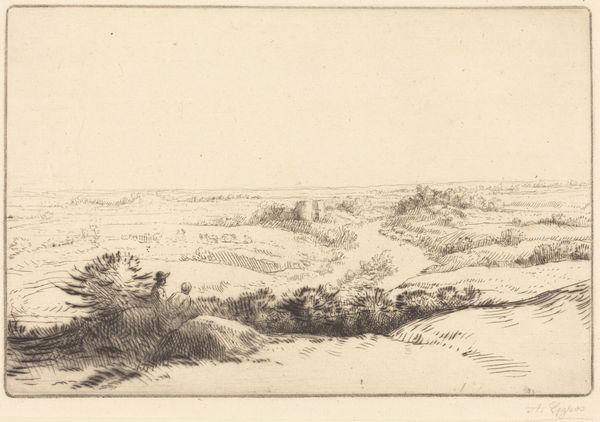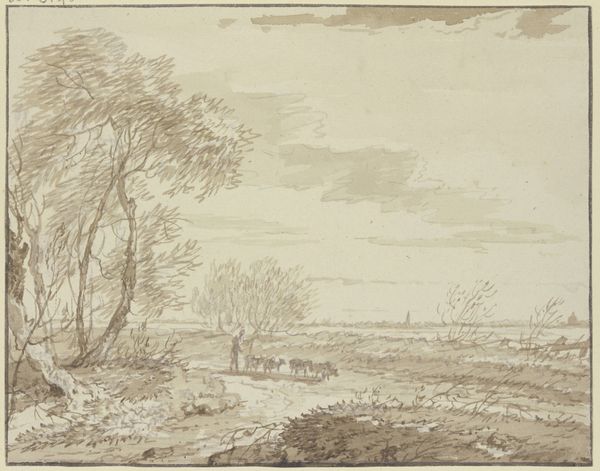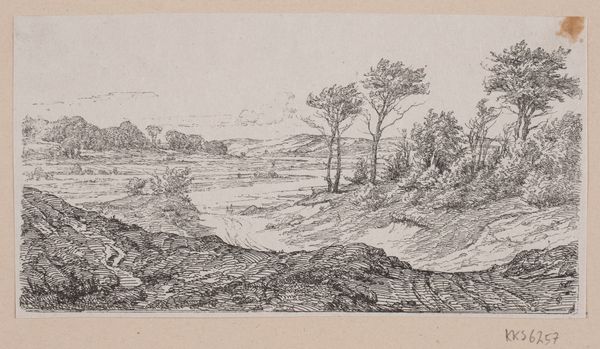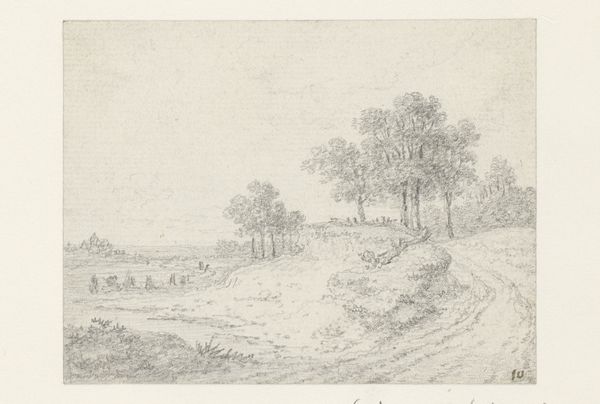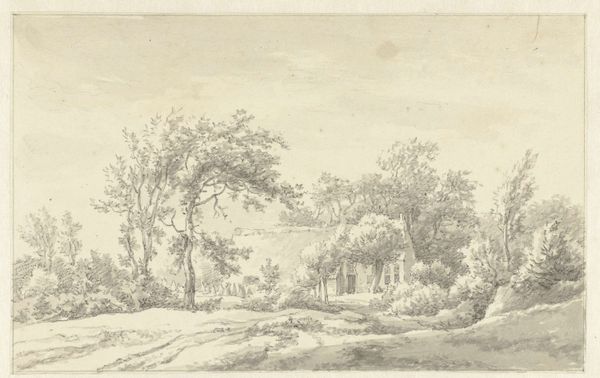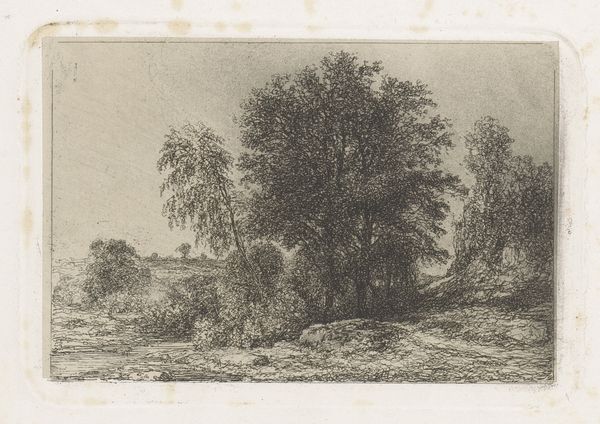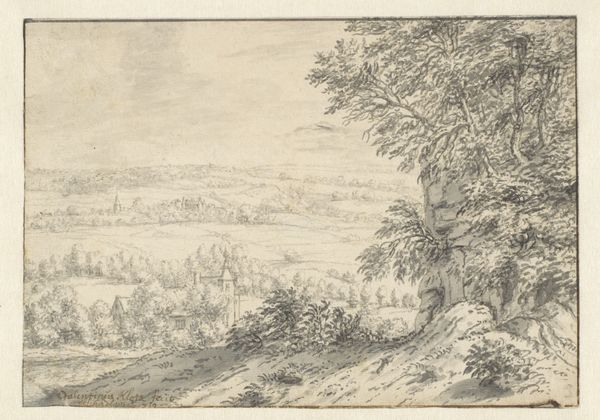
print, etching
# print
#
etching
#
landscape
#
realism
Copyright: National Gallery of Art: CC0 1.0
Curator: We’re looking at "Landscape: Road to Horville" by Alphonse Legros, rendered as a print using the etching technique. What's your initial take? Editor: Bleakness. A washed-out sky hangs heavy over a parched land, scratchy lines attempt some foreground foliage to the left, and draw my eye further into the desolate midground. It is rather sobering, even a bit somber. Curator: Right, that somber mood—which might, arguably, be tied to broader socio-political conditions of the era. Legros was working within a realist tradition, responding, in part, to idealized depictions of landscape. You could say his art gave visual weight to rural existences often ignored in mainstream narratives, connecting the image to burgeoning social consciousness. Editor: Undoubtedly. Yet I am intrigued how the simplicity of line becomes integral to the image’s thematic heft. Notice the contrast between the detailed foreground, achieved through dense cross-hatching, and the increasingly spare lines as our gaze stretches towards the horizon? A visual language almost poetic in its decline. Curator: Precisely. And if we see those fields not as merely aesthetic elements but as territories exploited, or perhaps left fallow by landlords, then the 'poetic decline' takes on further resonance. What is absent is just as meaningful. Editor: I would only say, there is something so raw, so essential in Legros's manipulation of form. See, in the lower left of the scene, we have that shadow pattern, yet Legros allows the white of the paper support to shine through to establish not just what to ‘see’ there, but how it all fits together in visual terms. The values of dark and light here express a unity that's palpable. Curator: Indeed. He gives us an insight into a changing relationship between humans, industry, and nature. To read his graphic work alongside accounts of rural labour and disenfranchisement... his landscapes take on additional, poignant layers of meaning. Editor: Ultimately, Legros reveals how stark simplicity can yield complex beauty—even when, as you aptly put it, reflecting themes of disenfranchisement. A fascinating intersection, as you suggest.
Comments
No comments
Be the first to comment and join the conversation on the ultimate creative platform.
